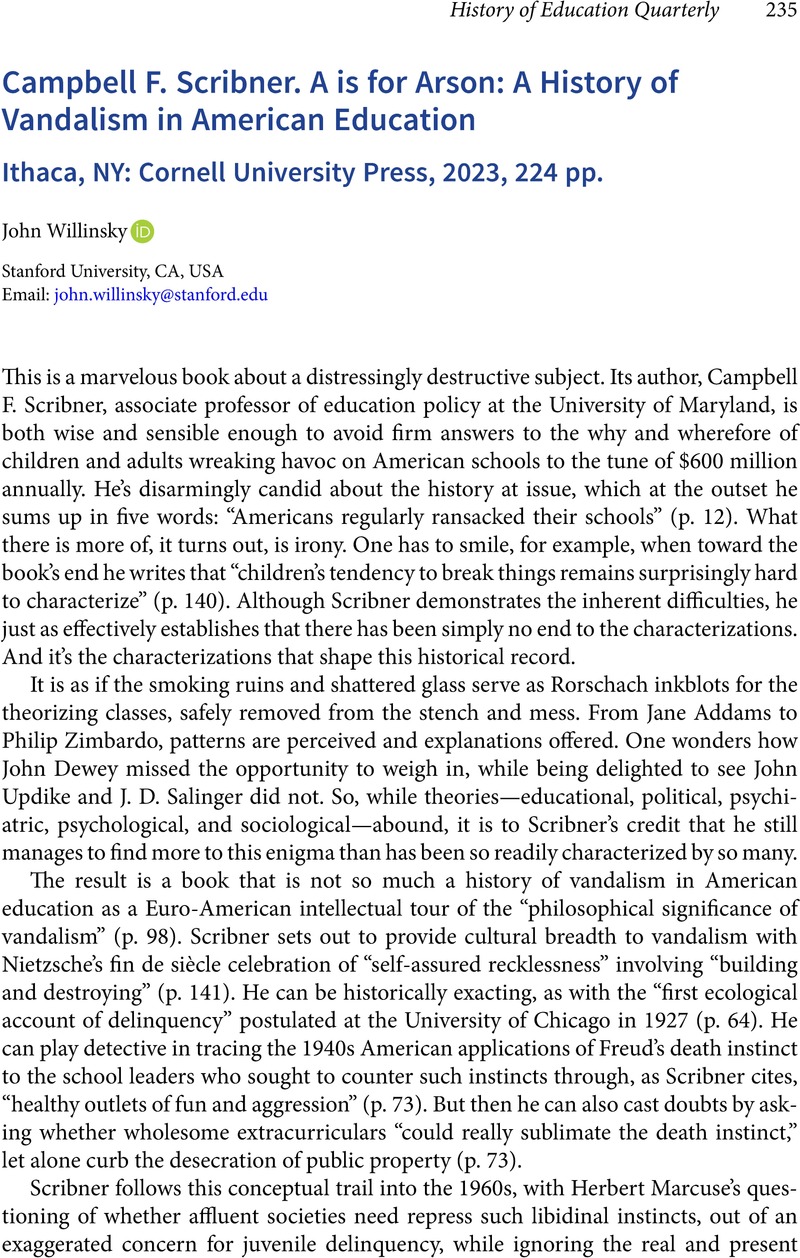No CrossRef data available.
Published online by Cambridge University Press: 16 May 2024

1 One can catch sight of a Marcusean refusal of repression during this period with the British progressive school founder A. S. Neill, who reports telling a six-year-old, after hearing that she was planning to break more windows out of a dislike for “dictators” like him, “carry on.” Neill, A. S., Summerhill School: A New View of Childhood (New York: St. Martin’s, 1996), Google Scholar. My thanks to Scribner for sending me back to the Marcuse text cited above: Marcuse, Herbert, “Repressive Tolerance,” in Wolff, Robert Paul, Moore, Barrington, and Marcuse, Herbert, A Critique of Pure Tolerance (Boston: Beacon Press, 1969), .Google Scholar
2 Scribner, Campbell F. and Warnick, Bryan R., Spare the Rod: Punishment and the Moral Community of Schools (Chicago: University of Chicago Press, 2021).CrossRefGoogle Scholar